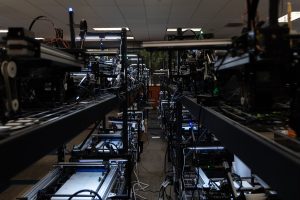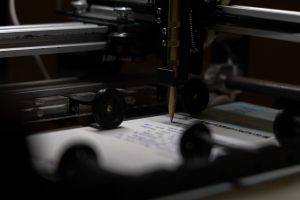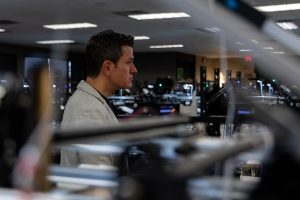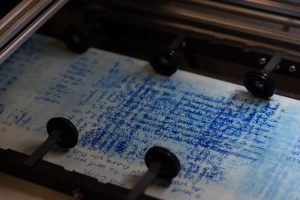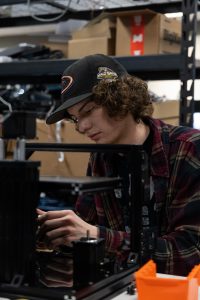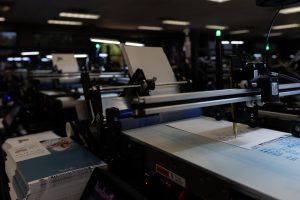- Slug: BC-CNS-Letter Writing. 505 words.
- 8 photos available (thumbnails, captions below).
- Video available.
By Julia Schamko
Cronkite News
PHOENIX – In 2001, the U.S. Postal Service designated April as National Card and Letter Writing Month. Now, 23 years later, companies are taking a new approach, giving ease and access to those looking to write letters.
With advancements in technology speeding up how humans communicate with each other, slower methods of communication, like letter writing, have been losing popularity. According to a 2021 CBS News survey, 37% of Americans hadn’t written a personal letter in over five years.
But two Arizona-based initiatives have created new approaches to the personalization of letter writing. One uses robots while another encourages individuals to write through monthly prompts.
Colleen Schwab, founder of Scottsdale-based Random Letter Project, recognized the need for personal connection when she created the writing-prompt project amid the COVID-19 pandemic to inspire people to slow down and “step away” from their devices.
“The idea behind it was really about seeing an opportunity for people to slow down via letter writing and also recognizing that in this day and age, not a lot of people want to share their home address. So being able to combine those two things, essentially what the Random Letter Project is,” Schwab said.
The project features a monthly prompt for participants to answer in their letters, sharing personal experiences and opinions to others who also write in. Participants then mail the letter into the project’s office, where the writer’s envelope is exchanged to protect privacy, then the letter is mailed out to another participant anywhere in the world.
“Letter writing gives us an opportunity to slowly see the world through someone’s eyes,” Schwab said.
Robot writers
Tempe-based Handwrytten utilizes robots to help companies counteract the impersonal nature of emails and automated text messages, according to David Wachs, president and founder.
“So in a world where everybody’s getting 150 emails a day, but only one to three handwritten notes a month, we help you sit and get into that short pile as opposed to that enormous pile,” Wachs said.
Handwrytten’s website allows companies to mass order handwritten letters out to clients, as well as individuals looking to mail out personal letters. Letters can be customized through handwriting styles and signatures, the ability to add logos or other graphics, and the inclusion of business or gift cards.
“We really help all of them with this very important form of communication that they simply don’t have the time for,” Wachs said.
Cards are written by the company’s 175 robots located in the Tempe office, all utilizing blue Pilot G2 ballpoint pens.
Wach’s company has a relationship with the Pilot company, choosing blue for the pen color as a way to stand out from the typically used black ink.
Overall, the goal is to connect in a more personalized way in an impersonal world of communication.
Both Wachs and Schwab agreed letter writing is a form of communication that is remembered by its recipients.
“I think handwritten notes really stand out and not only are they opened and read, but they’re kept and remembered,” Wachs said.
For more stories from Cronkite News, visit cronkitenews.azpbs.org.
